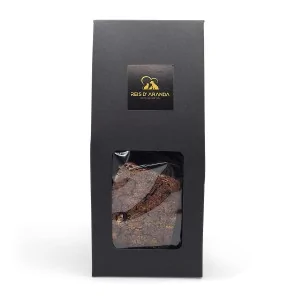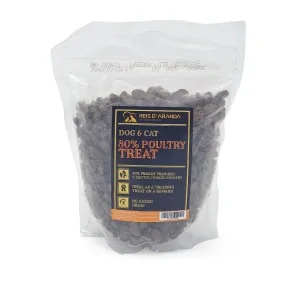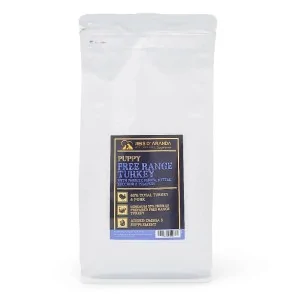Its name says it all: the Vienna blue rabbit comes from Austria. Not only is it beautiful with its shiny blue-grey...
THE MINIATURE SCHNAUZER
INTRODUCTION
The Miniature Schnauzer is a small dog with a big personality. He is loyal, lively, intelligent, affectionate and cheerful. His combination of calmness and liveliness makes him well adapted to all kinds of situations and families.
THE ORIGIN OF THE MINIATURE SCHNAUZER
The Miniature Schnauzer originated in Germany, specifically in Frankfurt, from the Standard Schnauzer. Although there is no absolute certainty as to the crosses made to achieve the present breed, it is thought that the affenpinscher and the miniature poodle are its ancestors.
Originally used as farmyard mousers, their beautiful appearance and pleasing personality gradually endeared them to city people, and today the Miniature Schnauzer is an extremely popular companion dog throughout the world.
THE STANDARD OF THE MINIATURE SCHNAUZER
GENERAL APPEARANCE: Small, vigorous, more compact than slender, with harsh coat, elegant, the shrunken image of the Schnauzer, without the defects of dwarfism appearing.
IMPORTANT PROPORTIONS:
- Square build, the height at withers corresponds more or less to the length of the body.
- The length of the head (from the tip of the nose to the occipital protuberance) is in relation to the length of the body (measured from the withers to the insertion of the tail) in a ratio of approximately 1:2.
HEAD
CRANIAL REGION:
SKULL: Strong and elongated, with the occiput not very pronounced. The head should correspond to the general strength of the dog. The forehead is flat and parallel with the muzzle, without wrinkles.
STOP: Well marked by eyebrows.
FACIAL REGION:
TRUFFLE: Well developed with well opened nostrils. Always black.
HOCIO: Ending in a truncated wedge shape. The nasal bridge is straight.
BELLY: Black, resting firm and flat on the jaws; the corners of the mouth are closed.
JAWS / TEETH: Upper and lower jaw powerful. The bite is scissor bite, strong and complete (42 teeth clean and white according to the dog's dental formula), should close well. The chewing muscles are strongly developed without, however, exaggerated cheeks spoiling the straight appearance of the head (with beard).
EYES: Medium sized, oval, turned forward, dark, with lively appearance. Eyelids close fitting.
EARS: Folded and drooping, set on high, V-shaped, the inner edges of the ears resting on the cheeks. The carriage of the ears is symmetrical, turned forward towards the temples. The parallel fold should not extend beyond the top line of the skull.
NECK: The nape of the neck is in keeping with the strength of the dog, muscular and nobly arched. The neck slopes harmoniously towards the withers. Strongly set, narrow, with noble carriage, contributing to the powerful and elegant appearance. The throat skin is close fitting and without dewlap.
BODY
topline : Sloping slightly from the withers towards the rear.
CROSS: The highest point of the topline.
BACK: Strong, short, firm.
LOIN: Short, strong, deep. The distance from the last rib to the hip is short so that the dog appears compact.
Croup: Slightly rounded imperceptibly towards the tail set on.
CHEST: Moderately broad, oval in shape, deep to the elbows. The forechest is especially marked by the point of the sternum.
BOTTOM LINE: Flanks not too tucked up so that together with the underside of the chest they form a harmonious, undulating line.
TAIL: Natural, the aim being to achieve a sabre or sickle shape.
LIMBS :
FOREQUARTERS: Seen from the front, the forelegs are strong, straight and not too close together. The forearms seen from the side are straight.
Shoulders: The shoulder blade rests firmly on the rib cage. Well muscled on both sides of the spine of the bone, protruding over the vertebrae of the spine in the thoracic region.
As sloping and well laid back as possible, forming an angle of 50° to the horizontal.
ARM: Close to the body, strong and muscular, forming an angle of approximately 95° to 105° to the shoulder blade.
ELBOW: Close fitting, turning neither in nor out.
FOREARM: Straight when viewed from all sides, strongly developed and well muscled.
BODY: Strong and stable. Its structure hardly stands out from that of the forearm.
Pastern: Straight when viewed from the front, slightly oblique in profile to the ground, strong and slightly springy.
HANDS: Short and round, fingers close together and arched (cat feet); short, dark nails and strong pads.
HINDQUARTERS: Seen in profile obliquely; from behind, parallel and not too close together.
Upper thigh: Moderately long, broad and strongly muscled.
KNEES: Turned neither in nor out.
LEG: Long and strong, sinewy, continuing into a powerful hock.
Hock: Well angulated, strong, firm, turning neither in nor out.
METATARSE: Short and perpendicular to the ground.
FEET:Toes short, arched and tight to each other; nails short and black.
GAIT / MOVEMENT: Springy, elegant, agile, free and with good ground coverage. The forelegs are stretched as far forward as possible and the hind legs - with good springy reach - give the necessary drive. The foreleg on one side and the hindlegs on the other side move simultaneously forward. Back, ligaments and joints are firm.
SKIN: Tight all over the body.
HAIR: The coat should be harsh, wiry and dense. It is composed of a dense undercoat and a short outer coat (which can never be too short) of hard, close lying hairs all over the body. The coat of the outer coat is coarse, of sufficient length to be able to check its texture, neither bristly nor wavy. The coat on the limbs tends not to be so harsh. On the head and ears it is short. Typical features are, on the muzzle, the beard, which should not be too soft and bushy eyebrows shading the eyes.
COLOUR
- PURE BLACK (undercoat).
- SALT AND PEPPER: For the salt and pepper, the aim of breeding is to obtain a medium shade with equal distribution of well pigmented pepper colour with grey undercoat. Shades ranging from dark steely grey to silver grey are permissible. All colour varieties should have a dark mask which underlines the expression and which is in harmony with the colour of the respective shade. Well defined light patches on head, chest or limbs are not desired.
- BLACK AND SILVER: For the black and silver the breeding objective is to obtain an outer coat of black hair with black undercoat, white patches over the eyes, on the cheeks, on the beard, on the throat, on the forechest two symmetrically placed triangles, on the metacarpals, on the feet, on the inner side of the hind legs and on the perineal area. The forehead, the nape of the neck and the outer sides of the ears should be black, as should the hair of the outer coat.
- PURE WHITE (white fleece)
SIZE AND WEIGHT
HEIGHT AT WITHERS:
- MALES AND FEMALES: From 30 to 35 cm.
WEIGHT:
- MALES AND FEMALES: from 4 to 8 kg.
FAULTS: Any departure from the foregoing points should be considered a fault and the seriousness with which the fault should be regarded should be in exact proportion to its degree and its effect upon the health and welfare of the dog.
In particular:
- Heavy or round skull.
- Wrinkles on the forehead.
- Short, pointed or narrow muzzle.
- Pincer bite.
- Light eyes, round or too large eyes.
- Low set or very long ears, ears carried differently from each other.
- Cheeks or cheek bones too pronounced.
- Loose throat skin.
- Dewlap, narrow neck.
- Back too long, tucked up or soft.
- Back too long, tucked up or soft.
- Drooping croup.
- Tail turned towards the head.
- Long feet.
- Ambling gait.
- Coat too short, long, soft, wavy, wiry, tufted, silky.
- Brown undercoat.
- Eel line on the back or black saddle.
- In black and silver, the triangles of the forechest not well separated from each other.
- 1 cm. above or below the upper and lower measurements.
SERIOUS FAULTS:
- Heavy or light appearance, short or patilargo.
- Inverted sexual characteristics (e.g. male female).
- Elbows turned outwards.
- Closed or barrel-shaped hindquarters.
- Tibia too long.
- Hocks turned inwards.
- Metacarpus too short.
- White or spotted coat on black and salt and pepper varieties.
- Spotted coat in the varieties black and silver and white.
DISQUALIFYING FAULTS:
- Aggressiveness or extreme shyness.
- Any dog showing clear signs of physical or behavioural abnormalities.
- Malice, exaggerated suspiciousness, nervous behaviour.
- Deformity of any kind.
- Lack of breed typicality.
- Faults in the bite such as undershot or overshot bite, deviated incisor arches.
- Gross faults in each region such as faults of construction, coat and colour.
- Variation of more than 2 cm in upper and lower height.
N.B.:
- Males should have two apparently normal appearing testicles fully descended into the scrotum.
- Only functionally and clinically healthy dogs, with breed typical conformation, should be used for breeding.
HEALTH OF THE MINIATURE SCHNAUZER
The Miniature Schnauzer is generally a healthy dog, especially if the breeder performs the appropriate health tests prior to breeding and the owner keeps the dog in good condition by providing regular veterinary visits, quality food and grooming services when necessary. However, he may suffer from the following diseases:
- PANCREATITIS: The pancreas is a gland very closely linked to the digestive system and especially susceptible to inflammation in the Schnauzer dog. This is why pancreatitis is a relatively frequent problem in this dog, which can also become chronic and present various acute episodes throughout the animal's life.
- HEMORRHAGIC ENTERITIS: This is a disease that produces severe inflammation in the intestinal tract accompanied by haemorrhage. It usually appears when Schnauzers are between 2 and 4 years old, and manifests itself mainly through repeated diarrhoea and vomiting. The cause of this disease is not known, although it is thought to be the body's reaction to an intestinal allergy. It can be controlled with a specific diet prescribed by the veterinarian.
- HIP DYSPLASIA: Like the Poodle, the Schanuzer is also prone to this condition. Dysplasia is a malformation affecting the coxofemoral joint, which is the junction of the femur with the coccyx of the hip. Its main symptoms are reduced mobility, lameness and pain.
- EYE PROBLEMS: This breed is susceptible to eye problems. Usually it is cataracts or some atrophy or dystrophy, so we must monitor the animal's eyesight. Cataracts in Schnauzers are thought to be of genetic origin, and can sometimes lead to total blindness.
As far as the health of the coat is concerned, it should be brushed every day to avoid tangles and the groomer should be visited every six to eight weeks for stripping to manually remove all the ‘old’ hair and keep the skin healthy. Avoid bathing him at home to prevent the coat from softening, if it gets dirty it is best to opt for dry shampoo.
THE PERSONALITY OF THE MINIATURE SCHNAUZER
These dogs are very active, intelligent, curious and loyal. They learn easily and when treated well are very gentle with their own kind. They are also fearless and persevering animals. Miniature Schnauzers tend to have a strong character, so it is important to take seriously the socialisation of these dogs from puppyhood. This helps to prevent them from becoming feisty, aggressive or fearful dogs in adulthood. Proper socialisation also facilitates interaction between adult Miniature Schnauzers and people.
CONCLUSION
The Miniature Schnauzer is a lively and very active little dog that can be a fun and rewarding companion. He can also be stubborn and obstinate, so he needs constant training and socialisation. Because of his guard dog nature, he is often quite barky and will quickly alert the family should any stranger approach his territory.
Leave a comment
Log in to post comments
















